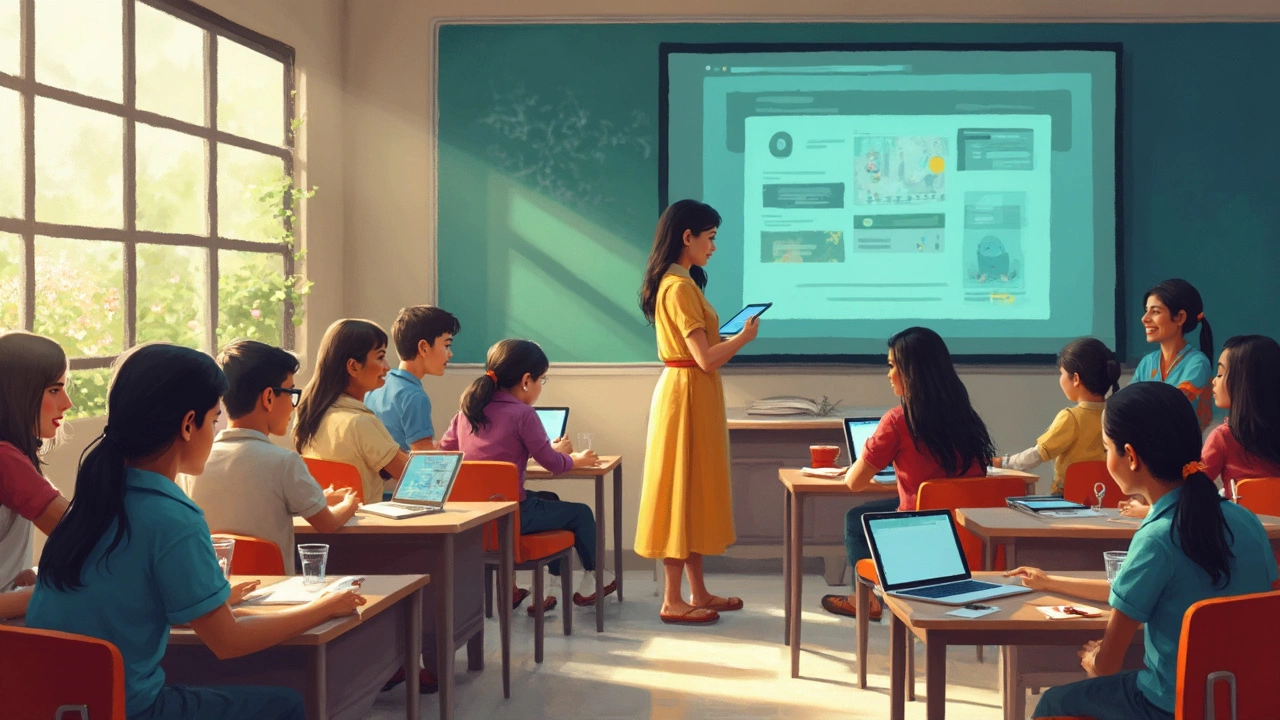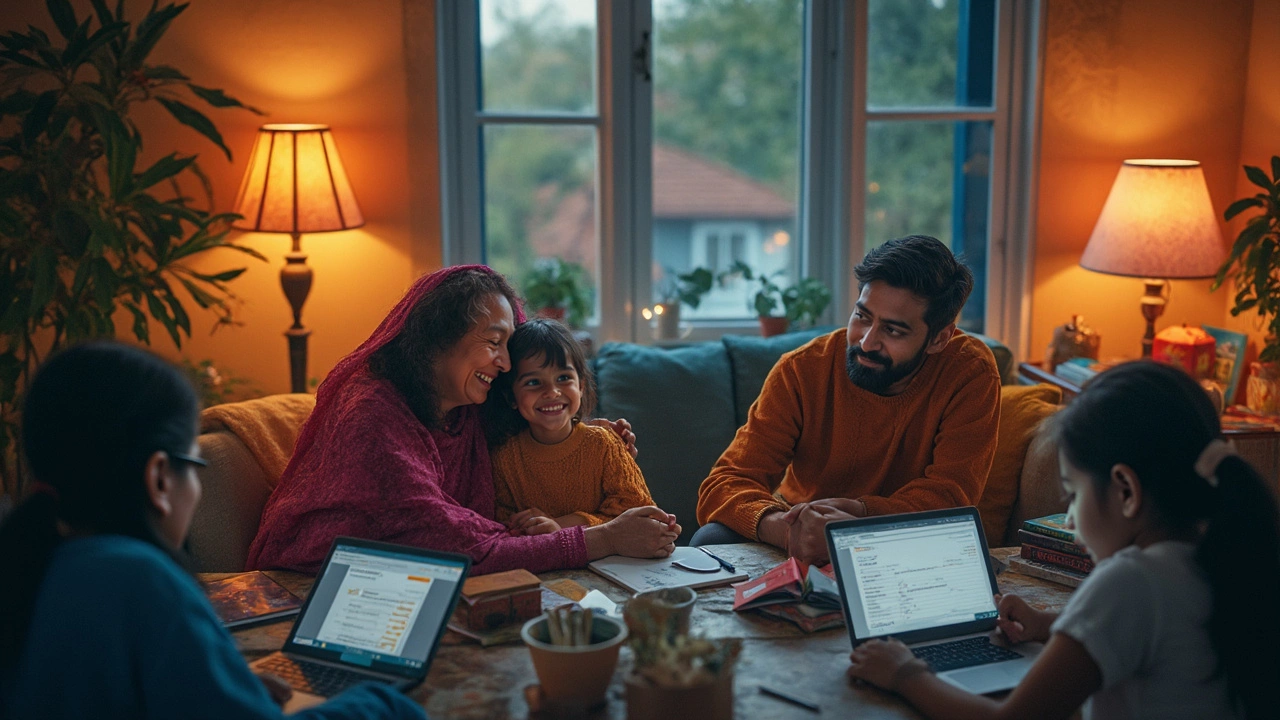
Is Google Classroom just another tech buzzword, or is it actually a full-blown digital platform? Plenty of parents and teachers get tangled up in this—so let’s clear the air. At its core, a digital platform is a place online where people can interact, share, learn, and manage stuff together. Google Classroom ticks all those boxes, but the magic is in how you use it.
When my nephew’s school first switched to Google Classroom, his teachers suddenly found themselves juggling assignments, grades, and announcements—all in one spot. No messy email chains, no lost homework under the couch (although if you ask Leo, my golden retriever, homework still tastes the same).
If you’re a parent or a teacher, you’ll see right away that Google Classroom isn’t just a random app. It connects with other Google tools—like Drive, Docs, and Meet—so you’re not bouncing around between ten different logins. Everything stays together. And you don’t need to be a tech wizard to get the hang of it. Most people pick it up in an afternoon.
- What Makes a Platform 'Digital'?
- Google Classroom: Features and Real-World Uses
- How Schools and Students Benefit
- Tips for Getting More Out of Google Classroom
What Makes a Platform 'Digital'?
So, what actually counts as a digital platform? It might sound technical, but it’s really just a fancy name for an online space where you get stuff done, connect with people, and make things happen digitally—no paper, no desk piles, just the internet and a device.
The basics boil down to a few main things:
- It runs on the internet—no need to install anything chunky.
- You can log in anytime, anywhere (from your room, during a road trip, or even at Leo's dog park).
- People use it to share files, manage tasks, or chat in real time.
- It usually connects with other digital tools to make life easier.
If you look at schools today, they’ve gone all-in on digital platforms for one big reason: simplicity and reach. Instead of being stuck in one classroom, students and teachers connect from all over the place. A 2024 survey showed over 85% of public schools in the U.S. use at least one digital learning platform daily. That’s wild compared to just a decade ago, where online tools were a backup, not the main act.
Check out this quick comparison:
| Traditional Classroom | Digital Platform |
|---|---|
| Paper handouts | Instant file sharing |
| Face-to-face only | Video calls or chatrooms |
| Fixed schedule | Anytime learning |
| Local reach | Global reach |
When someone asks, "Is Google Classroom a digital platform?"—the answer’s yes, because it covers everything on this list. You can share material, give assignments, grade work, and chat with your class, all inside a single, slick platform. This is what sets Google Classroom apart in the e-learning world.
Google Classroom: Features and Real-World Uses
When we talk about Google Classroom as a digital platform, the features are what make it stand out. You aren’t just sending files back and forth—this is streamlined, organized, and built for busy teachers who don’t have time to chase down missing work or re-explain the same task five times.
Here’s what you get right out of the box:
- Assignment Management: Teachers can post homework, quizzes, and projects with clear deadlines. Kids see exactly what’s due and when. Everything’s in one place, so you’re not digging through inboxes or paper stacks.
- Automatic Grading and Feedback: With Google Forms quizzes, grades pop up instantly. Teachers can type comments directly on docs—way faster than the old red pen method.
- Integration with Google Drive: Every doc, slide, or sheet is saved automatically. If a student deletes a file by accident, you can find the history. No more "dog ate my homework" excuses (Leo, sorry buddy).
- Class Announcements: Need to send a reminder? One click blasts it to everyone. Parents can check in, too, so they're never out of the loop.
- Secure Communication: Only people with the class code can join. Teachers control who posts and who can comment, cutting down distractions or unwanted guests.
In real life, schools use Google Classroom for way more than just homework. I’ve seen teachers share YouTube science demos, run live video classes with Meet, and organize group work using shared Slides. Some schools even run club meetings and counseling sessions right in Classroom.
Teachers love the time-saving hacks. For example, "Reuse Post" lets you pull up last year’s assignments with one click—no retyping. Students like seeing real-time feedback and never having to wonder if the dog actually ate that essay.
This setup is all about making e-learning simple and keeping everything together so both teachers and students can focus on actual learning, not tech headaches.

How Schools and Students Benefit
When schools went remote in 2020, teachers and students around the world jumped onto Google Classroom almost overnight. Suddenly, handing in homework meant clicking a button—not shoving crumpled papers into backpacks. In 2022, Google announced that more than 150 million users relied on Google Classroom globally. That’s a huge jump from 40 million in 2020. It shows how fast schools adapted once they found a tool that actually worked.
What’s behind this massive switch? For schools, it comes down to time and organization. Administrators noticed that teachers could post assignments, give feedback, and keep parents updated—all in real time. Here’s what really stands out:
- Assignments and deadlines are clear, so no more forgetting what page the math homework is on.
- Teachers can quickly drop a comment if a student needs a nudge or a bit of encouragement.
- Parents get a lot more insight—if schools turn on Guardian Summaries, parents see missing work and upcoming assignments in their email, without having to bug their kids for info.
One middle school principal from Texas put it best:
"Google Classroom didn’t just save us during the pandemic—it changed how we teach every day. Now, there’s less paperwork, less hassle, and more time for actual teaching."
Students don’t miss out, either. They’re used to digital life, so using links, videos, and file uploads fits right in. If a student is sick or stuck at home (been there, done that), they can still keep up with lessons. Everything’s online—notes, quizzes, feedback from teachers—so nothing gets lost in the shuffle.
Check out these eye-opening stats about Google Classroom use in schools:
| Year | Global Users | Assignments Submitted Daily |
|---|---|---|
| 2020 | 40 million | About 50 million |
| 2022 | 150 million | Over 150 million |
For teachers, grading and staying organized is way less stressful. Students can see feedback instantly, and schools save big on printing costs. Plus, with everything saved in the cloud, late homework is just an upload away instead of a “my dog ate it” excuse. (Sorry, Leo.)
Tips for Getting More Out of Google Classroom
If you stick to just the basics in Google Classroom, you’ll probably miss half the good stuff. People often settle for sharing assignments and calling it a day, but this Google Classroom platform packs a bunch of simple tricks that make life way easier for teachers, students, and even parents.
Here are some practical tips to unlock more from Google Classroom:
- Use Topics to Organize: Instead of dumping assignments in one feed, set up topics—like "Homework," "Quizzes," or "Week 12." It saves a ton of scrolling for everyone and keeps materials one click away.
- Automate Feedback with Rubrics: You can add rubrics when you make an assignment. Not only does it help students understand how they’ll be graded, it also saves you loads of time when it comes to giving consistent feedback.
- Reuse Posts: If you’re teaching more than one class or repeating a lesson, the 'Reuse post' feature lets you share materials without re-uploading or copying everything over. It sounds basic, but it’s a massive time saver.
- Integrate with Google Meet: Set up a recurring class video link so students can always find it at the top of your Classroom stream. No more sharing new meeting links each week.
- Encourage Comments and Questions: Turn on (and monitor) class comments so students help each other out. If you’re worried about spam, you can allow only teacher posts—whatever fits your classroom vibe.
Quick tip: The Google Classroom mobile app is actually solid. It handles notifications well, and kids find it easier to snap and upload homework pics directly from their phone.
Finally, if you want faster grading, try grading offline. Download the submissions, mark them on your device, and upload the grades when you’re back online. It works great in areas with slow or unstable internet.
The bottom line: if you poke around a little and try new features, you’ll find Google Classroom can handle a lot more than you might think. No expensive software, no steep learning curve—just practical tools bundled in one place.
